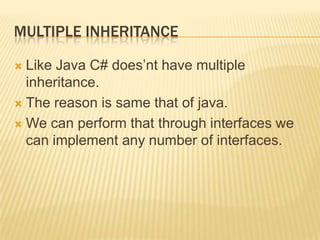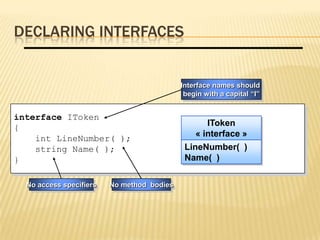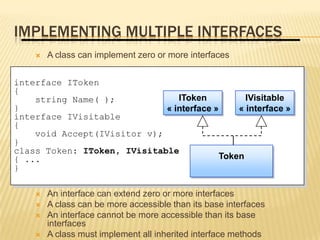This document discusses implementation of inheritance in Java and C#. It covers key inheritance concepts like simple, multilevel, and hierarchical inheritance. It provides examples of inheritance in Java using keywords like extends, super, this. Interfaces are discussed as a way to achieve multiple inheritance in Java. The document also discusses implementation of inheritance in C# using concepts like calling base class constructors and defining virtual methods.

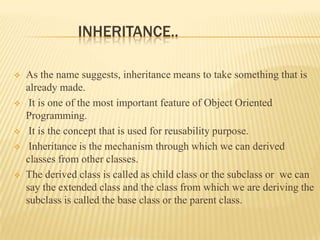
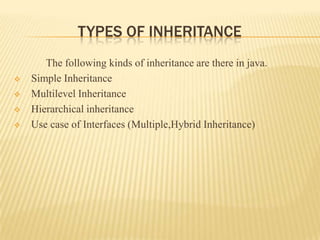

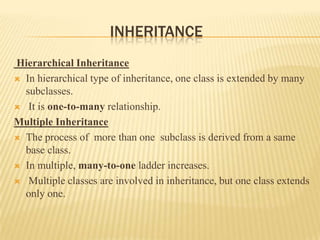
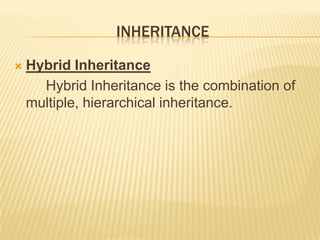

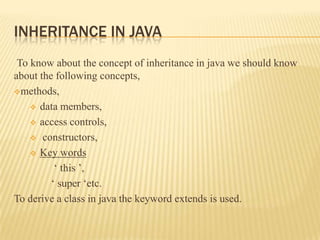
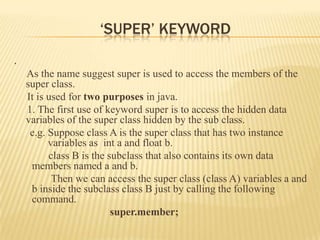
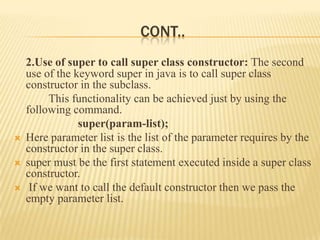

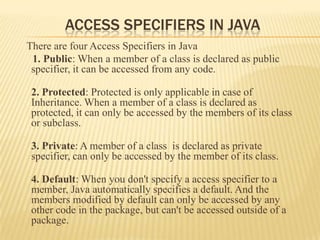
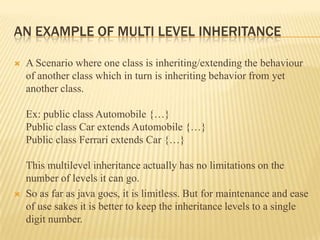

![CONT..
public static void main(String args[])
{
Parrot p1 = new Parrot();
p1.food(); // calling its own
p1.eat(); // calling super class Bird
method
p1.nature(); // calling super class Aves
method
}
}](https://image.slidesharecdn.com/inheritanceinjava-120903114217-phpapp02/85/Inheritance-in-java-15-320.jpg)

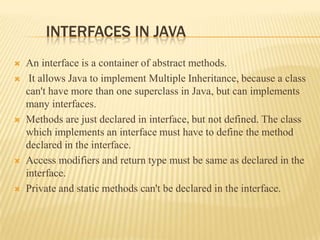
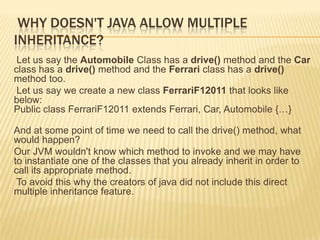
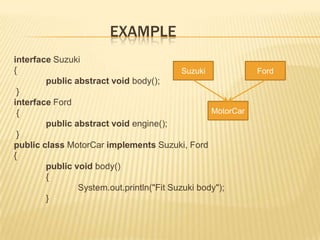
![CONT..
public void engine()
{
System.out.println("Fit Ford engine");
}
public static void main(String args[]) {
MotorCar mc1 = new MotorCar();
mc1.body();
mc1.engine();
}}](https://image.slidesharecdn.com/inheritanceinjava-120903114217-phpapp02/85/Inheritance-in-java-20-320.jpg)
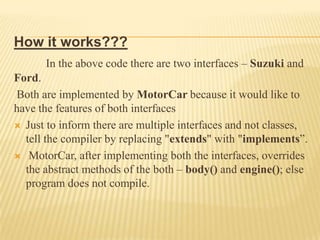
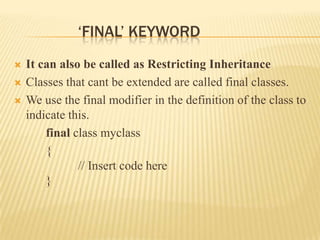

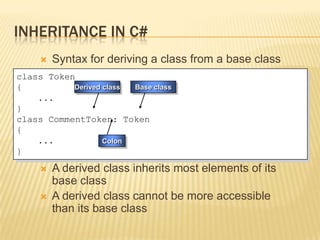
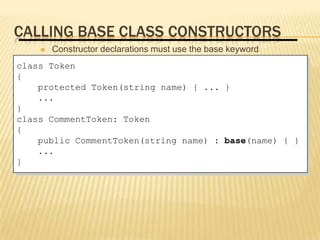
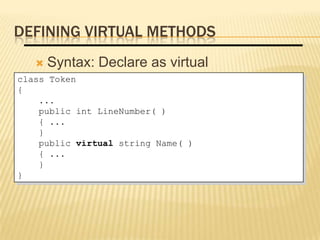
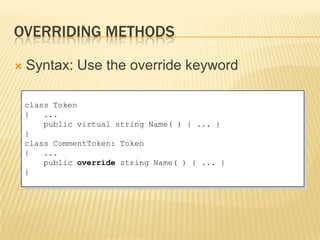
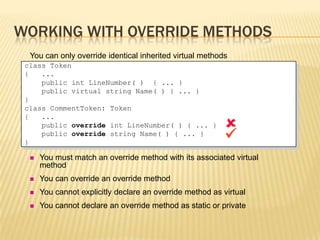
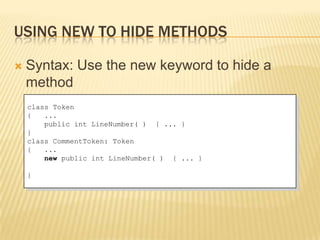
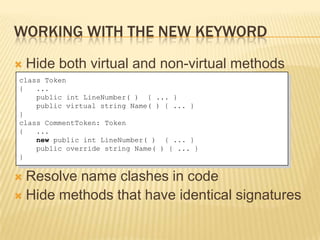
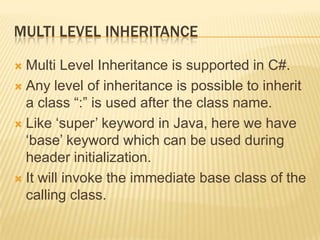
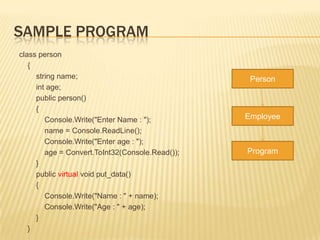
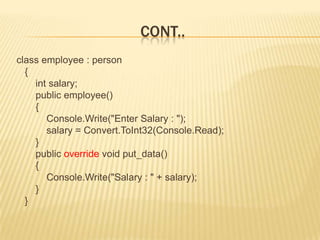
![CONT..
class Program : employee
{
static void Main(string[] args)
{
employee e1 = new employee();
e1.put_data();
Console.WriteLine("Press any key to exit...");
Console.ReadLine();
}
}](https://image.slidesharecdn.com/inheritanceinjava-120903114217-phpapp02/85/Inheritance-in-java-34-320.jpg)
